Wine Grapes - A Review
POSTED ON 24/11/2012When Wines, Grapes and Vines by Jancis Robinson MW first came out to great acclaim in 1986, it was a book of its time. It was important because the New World was turning the European model of terroir on its head and placing the emphasis on grape variety. Until then, as Wine Grapes puts it, ‘virtually all wine was named after the region, vineyard, village or property where it was grown’. Not surprisingly, this simple and successful form of marketing (for consumers) was frowned upon by the snooty French.
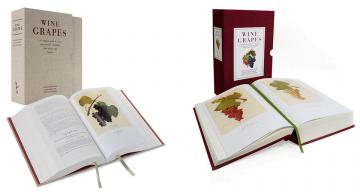 Wine Grapes www.winegrapes.org
Wine Grapes www.winegrapes.org
Hand in glove with marketing by grape variety, the introduction of the grape as a serious subject for study and discussion has revolutionized the way we now look at wine style and flavour. Terroir hasn't gone away but in addition to checking out a wine’s characteristics based on its location, we now have the additional prism of grape variety to sharpen the focus. So much so that the diverse flavours and quality levels of different grapes have become part of the language by which the enjoyment of wine can be communicated more effectively.
As the authors say, ‘learning the names of a handful of the most popular varieties …was enough to unlock the entire world of wine’. One of the knock-on effects has been a renewed focus on grape variety by both producer and consumer. At a time when the rock stars of the wine grape world, chardonnay and cabernet sauvignon, threatened to take over the world, producers were encouraged to take commercial risks and bring local colour to their wines by focusing on their native grapes.
The result has been a renaissance in the world’s wine regions. In Tuscany for instance, sangiovese has seen off the threat of cabernet sauvignon, similarly in Priorat, where producers are asserting the historical importance of garnacha and cariñena. Chile’s Maule Valley is making a noise with its legacy of old bush vine pais and carignan and Roussillon with its blends of maccabeu and grenache blanc and gris. In Italy above all, as the authors point out, 'there are initiatives all over the country to save from extinction and recuperate historic vine varieties that until recently have been known to perhaps only one or two farmers’.
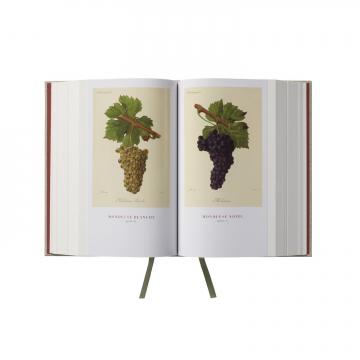 Mondeuse Blanche and Noire www.winegrapes.org
Mondeuse Blanche and Noire www.winegrapes.org
Not all grapes are equal. The greatest often adapt to the poorest terrains to produce wonderful wines. They vary not only in quality and in flavour but also in ageability. They adapt in different ways to specific soils and climates. When Torres found licorella soils in Chile for instance, they planted Catalonia’s garnacha and carignan only to find the Pacific climate was too cool. The limestone sub-soils of Coonawarra resemble the limestone of Burgundy and yet has anyone made a world-beating pinot noir or chardonnay there?
Wine Grapes helps us dissect wines such as Portuguese blends by deconstructing the individual components to shine a light on what each brings to the party. Blending grape varieties is not just confined to traditional regions but a trend, as the authors point out, of ‘deliberate marketing of blends of different varieties with the aim of creating more interesting and complex flavours or to emphasise the region of origin’. Take South Africa for instance where the blending of white Rhône-style varieties in Swartland is creating an entire new identity for Cape whites.
Led by Italy with 377 varieties, then France with 204, this A – Z of 1,368 grape varieties from Aramal to Zweigelt follows a practical formula of synonyms, mistaken identities, history, parentage, how much is planted and where, and, most relevant for wine lovers, what its wine tastes like and who are the top producers of wines made from the variety. Adding a splash of colour to a handsomely printed and bound tome, there are some lavish plates too of bunches of grapes and their leaf characteristics.
Written by the formidable triumvirate of Jancis Robinson MW, Julia Harding MW and José Vouillamoz, Wine Grapes is a seamless work in which it’s not easy to tell who’s written what. Not that it matters. What we do know is that José Vouillamoz is the extremely clever grapes man, Julia Harding is the extraordinarily industrious master of wine, and Jancis Robinson is, well, Jancis Robinson, queen bee of wine writers. How much of the book did she contribute to? 'There’s nothing in the book that didn’t go through my computer', she says cagily. It certainly has the stamp of Robinson's authority.
The introduction and historical perspective chapters provide valuable insights into what grape varieties actually are, how a new one comes into being, how vine breeding works and the effect of pests and diseases on the vine. Technical issues of genetic diversity, mutations, clones and DNA profiling are discussed in clear, intelligible language. There is a useful glossary, and, as befits such a scholarly work, an impressive 20-page bibliography.
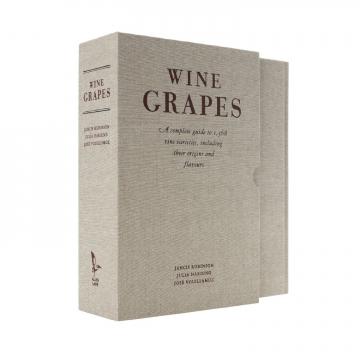 By the Book www.winegrapes.org
By the Book www.winegrapes.org
Wine Grapes includes 14 arcane grape pedigree diagrams showing the complex family trees of major varieties and minor hybrids such as the little-known (to me at least) Brianna. There’s a wealth of esoterica such as the fact that nebbiolo rosé can no longer be considered the same grape as nebbiolo, that pignolo is so-called because the shape of its bunches resembles a pine cone (pigna in Italian), and that GF-GA 48-12 is a ‘disease-resistant German hybrid that has (despite the lack of a name) found some favour in Switzerland’.
The many delightful grape names, such as buket, cacaboué, grk and vandal-cliche, add yet more colour and offer perfect material for nerdy trivial pursuit games on a rainy day. On that note, I was pleased to see the Japanese wild mountain vine yamabudo in there, although there’s no room for my favourite grape name of all, the very elegantly named yamatonadesiku.
Some grapes sound like girls names: melody, rosetta, flora, lydia, isabella; or boy’s names: rollo, carlos, noah, andré, césar. Others suggest hotels: radisson, or restaurants: quagliano, recantina, oysters: prairie star and composers: pukhliakovsky, ovidiopolsky and bussanello. There are soccer players: tribidrag, porn stars: cococciola and unfortunate conditions: roditis, sideritis, pules. Some have ideas above their station: regent, triomphe, royalty; others below: servant.
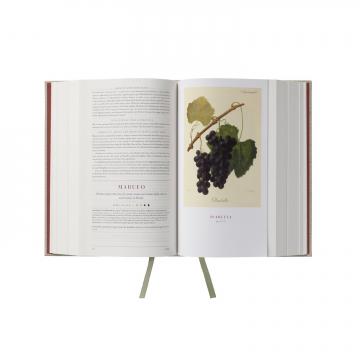 Isabella www.winegrapes.org
Isabella www.winegrapes.org
While Wine Grapes is a must if you want to buff up your knowledge of the major grape varieties, the three Js shine a light on up-and-coming grape varieties undergoing a revival thanks to a renewed interest in a region hitherto ignored or underestimated. One such region is South West France for instance, where the spotlight illuminates the characteristics of grapes such as the len de l’el of Gaillac, the almost forgotten prunelard and the négrette of Fronton. In the latter case, Wine Grapes explains why its characteristics have encouraged producers to blend it with other varieties.
Head for Spain, the land of tempranillo and garnacha, and Wine Grapes introduces us to some minor actors whose rôle is of growing importance, godello, verdejo, bobal and mencía, the latter an ‘increasingly appreciated aromatic variety’, to mention just a handful. In Croatia, graševina gets its due as an ‘unfairly maligned variety widely planted in Central Europe that has in its time suffered in comparison to riesling’. Koshu is recognized as ‘Japan’s delicate, light-bodied signature variety starting to gain international recognition’. Other grapes are so minor that only a handful of producers, or in a handful of cases, just one producer, make wine from them.
What might initially throw you is that if you look for zinfandel or its synonym primitivo, you’ll find them under their Croatian name of tribidrag even though it’s said to be ‘much better known as primitivo or zinfandel’. The same goes for grapes such as gewürztraminer, whose entry directs you to ‘savagnin’, or país, which turns out to be listán prieto. Why? The grape’s 'prime name' is generally 'the most commonly used in the variety's country or region of origin'. It's no big deal however because names and synonyms are all listed in the index.
 Jancis Robinson www.winegrapes.org
Jancis Robinson www.winegrapes.org
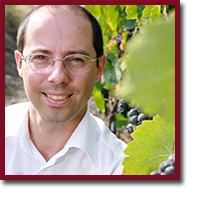 José Vouillamoz www.winegrapes.org
José Vouillamoz www.winegrapes.org
 Julia Harding www.winegrapes.org
Julia Harding www.winegrapes.org
Who is this learned book for? It may not be a page turner but it’s not designed as the script for a Hollywood movie unless and until someone creates a Toy Story for grapes. It’s for wine producers, viticulturalists, educators, students, wine writers, avid readers of wine magazines and geeks. Given the continuing expansion of the wine world from Europe to the New World and now to Asia, Wine Grapes is an invaluable resource destined to find a fascinated, albeit niche, audience.
Wine Grapes (Allen Lane: The Penguin Press, £120. Cloth bound Hardback in slipcase) by Jancis Robinson MW, Julia Harding MW and José Vouillamoz. For more information, including offer for UK residents to buy for £75 until 31 December, visit www.winegrapes.org

